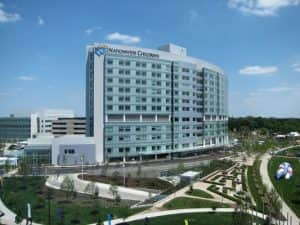Why Would A Hospital Get Into The Real Estate Business?
Published on October 5, 2018 by Nick Walsh

A 2008 initiative by the Nationwide Children’s Hospital, located in Southern Orchards Columbus, began investing in neighborhood homes with a program called Healthy Neighborhoods Healthy Families (HNHF). In partnership with city and community groups, they are helping residents renovate vacant homes for resale, building affordable housing, and offering grants to homeowners to fund home renovations.
Increasing evidence points to a correlation between living in areas of concentrated poverty and health. The doctors at Nationwide Children’s Hospital, like Dr. Kelly Kelleher, saw this first-hand. “Houses that are falling apart, plumbing problems, mold, rat infestations, and violence. You see 26 kids a day, and maybe two-thirds of them are in these desperate straits. The impact on kids goes beyond toxic living conditions like mold and lead,” says Kelleher. The stress of living with violence, racial segregation, and other unstable living conditions leads to what researchers call “the neighborhood effect.”
The hospital is treating “the neighborhood as a patient.” They hope that by providing children with safe and stable housing, they can help prevent many health conditions through physical and socio-economic environments. According to NPR Illinois, “the hospital-led partnership built 58 affordable housing units, renovated 71 homes, built 15 new homes, and gave out 149 home improvement grants between 2008 and 2018. With additional grants, it also built a 58-unit housing development combined with office space.”
New changes in Medicaid reimbursement serve as a motivation to invest in community projects like housing. The fee-for-service model where hospitals are reimbursed for each procedure is losing popularity. A newer trend of states funding health organizations with a lump sum of money to help manage someone in a population helps investment in preventative care. One example of preventative care being a healthy place to live.
Some positive metrics of the neighborhood are the dramatic reduction of murders and that high school graduation rates have risen. Nationwide Children’s Hospital and Dr. Kelleher are also studying metrics on the number of emergency room visits, inpatient days, and the various types of problems that children present at the hospital. But it may take more time to show signs of improvement.
